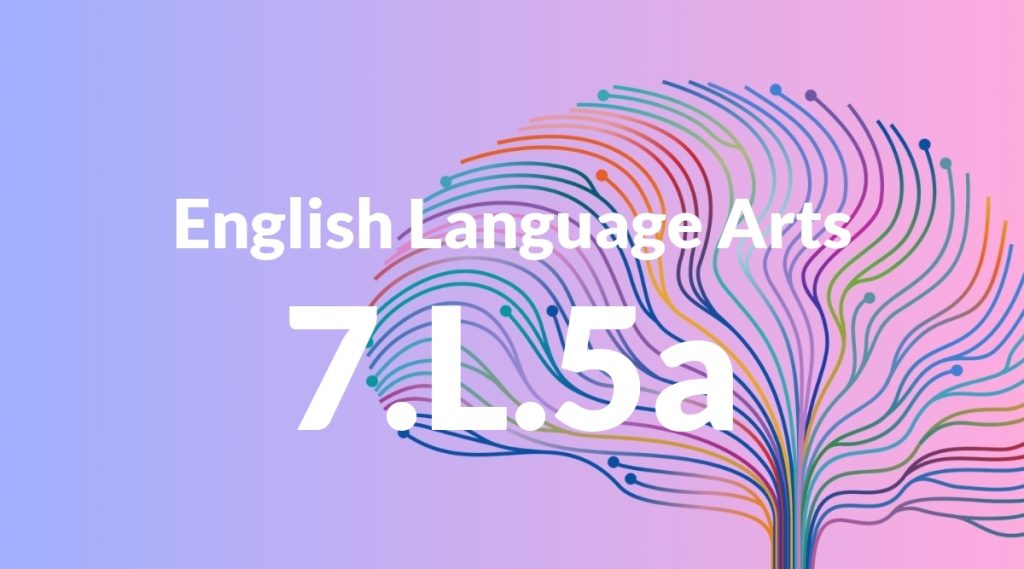Standard: 7.L.5a – Interpret figures of speech (e.g., literary, biblical, and mythological allusions) in context.
Grade level: Grade 7
Subject: English Language Arts
Domain: Language
Teacher Overview
This standard focuses on helping students interpret figures of speech in context. Understanding figures of speech is crucial as it enhances students’ ability to comprehend and appreciate literature, historical texts, and everyday language. This skill is foundational for more advanced literary analysis and critical thinking. Students should have a basic understanding of different types of figurative language such as similes, metaphors, and idioms. They should also be familiar with basic literary terms and concepts.
After mastering this standard, students will be able to analyze more complex literary devices and themes, enhance their critical thinking skills, and appreciate deeper meanings in texts.
Common Misconception 1
A common misconception is that all figures of speech are meant to be taken literally. This is incorrect because figures of speech often convey meanings that go beyond the literal words used.
Intervention 1
An effective intervention is to provide examples of literal versus figurative language and have students practice distinguishing between the two. This can be done through interactive activities and guided practice.
Common Misconception 2
Another misconception is that figures of speech are only found in poetry. This is incorrect as figures of speech are prevalent in various forms of writing, including prose, speeches, and everyday language.
Intervention 2
To address this misconception, show examples of figures of speech in different genres and contexts. Encourage students to identify and interpret figures of speech in diverse texts.
Prerequisite Knowledge
Students should have a basic understanding of different types of figurative language such as similes, metaphors, and idioms. They should also be familiar with basic literary terms and concepts.
Subsequent Knowledge
After mastering this standard, students will be able to analyze more complex literary devices and themes, enhance their critical thinking skills, and appreciate deeper meanings in texts.
Instructional Activities
- Analyze excerpts from literature and identify figures of speech
- Create a figurative language scavenger hunt
- Write short stories or poems using various figures of speech
- Discuss the meaning of idioms and their origins
- Compare and contrast literal and figurative language in different texts




